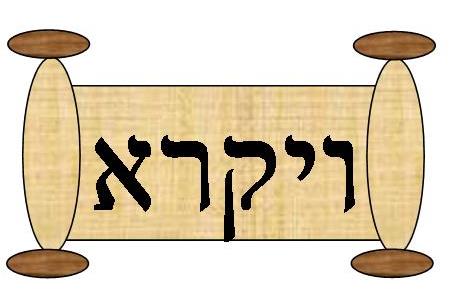In this week’s parashah, we begin the third Book of the Torah. This parashah deals with many issues regarding the categories, and the rules surrounding sacrifices. There is much debate as to why the Israelites were instructed to offer sacrifices. For example, Maimonides and Nachmanides differ as to how they perceive the meaning and purpose of the sacrifices. Maimonides recognizes the fact that idolatry was prevalent among the nations prior to, and for a long time before the Israelites received the Torah. It was, therefore, a practice that the Israelites were familiar with, and which they took part in – since there was no prohibition. Maimonides explains that God allowed these rituals to continue, but ‘altered’ what their meaning. God transferred to His service that which had formerly served as a worship of created beings, and of things imaginary and unreal, and commanded us to serve Him in the same manner. By this Divine plan, the traces of idolatry were blotted out, and the truly great principle of our faith, the Existence and Unity of God, was firmly established. This aim was achieved without deterring or confusing the minds of the people by the abolition of the service to which they were accustomed and which alone was familiar to them. Nachmanides, on the other hand propounds an alternative explanation, as cited by Nechama Leibowitz,: He feels that a more acceptable rationale is that a person who has committed a transgression and offers a sacrifice , shall place his hands on it – symbolizing the deed, make a confession – as a reminder of the misused power of speech, and burn with fire the bowels and kidneys – which are the organs of thought and lust, whereas the legs symbolize instruments which serve man in all of his activities (like the hands). This is logical seeing that human conduct is expressed in thought, speech, and action.
A puzzling aspect of the Book of Leviticus is the manner in which it begins. In his essay entitled ‘A Portable Sinai’, Everett Fox, director of Judaic Studies at Clark University in Massachusetts, discusses this anomaly. He states that of all the books of the Torah, Leviticus has the bumpiest beginning. Instead of an exalted opening, such as we have in Genesis’ “In the beginning God created the heavens and the earth,” our book begins “Now He called to Moses, and the Lord spoke to him…” If one reads the standard translation, such as in the King James Version which reads, “And the Lord called unto Moses, and spoke unto him…”, one would not suspect that there is anything unusual about the text. In the Hebrew though, the problem does not go away. It is odd that Leviticus, a book obsessed with order and hierarchy, begin with such a sloppy sentence. The rabbis of the Talmudic era sensed the difficulty with this verse, since they held that the Torah speaks in human language, and that this is awkward human language indeed. The rabbi’s interpretations fall along the line that God wanted to teach that Moses was above all other Israelites and deserved to be directly called by God. Or due to Moses’ faithful execution of God’s word in every detail of building the tabernacle, he merited being called into the newly completed Tabernacle to speak with God. Fox says that these interpretations tell us a great deal about the rabbi’s veneration of Moses, but do not solve the problem of the text. One possibility proposed by biblical scholars is that the book was once the direct continuation of Exodus, with no break. In that reading, our verse more or less directly follows a passage telling us that “the Presence of the Lord filled the tabernacle” (Exodus 40:35); that God’s aura came to dwell in the sanctuary the people had built. Leviticus 1:1 would then simply spell out the next communication to Moses from the Divine Presence – the obvious subject of the sentence. Hence the unspecified “He” or “It” with which the book begins. But the fact remains that Leviticus is a separate book. The only other biblical passage that reads “He called to Moses” comes in Exodus 24:16. We have just had several chapters of major laws and a ceremony on Mt. Sinai reaffirming the covenant. Moses is then called to receive further instruction, which proves to be the architectural details of the tabernacle. Since Leviticus 1:1 begins right after the Tabernacle’s completion in Exodus 40, one could argue that in terms of literary architecture, our opening is a bracket – the second of two – setting off an important section of the Torah. As Leviticus now stands, we might be justified in seeing its first passage as an evocative allusion to the parallel passage in Exodus. The Sinai covenant ended there with Moses being “called” to commune further with God; and here, too, we are undoubtedly meant to understand the regulations of Leviticus as stemming from God’s “calling,” and so part and parcel of the Sinai experience. The allusion in effect turns the tabernacle into a portable Sinai of human manufacture. The Israelites can rest assured that even now, after the revelation on the mountain is past, Moses will still have the Divine word to provide them with instruction and guidance. “Now He called to Moses: The Lord spoke to him…” It is, in fact, a fitting beginning for a book that ends, “These are the commandments that the Lord commanded Moses for the children of Israel at Mount Sinai” (Leviticus 27:34).
Prepared by Devorah Abenhaim







